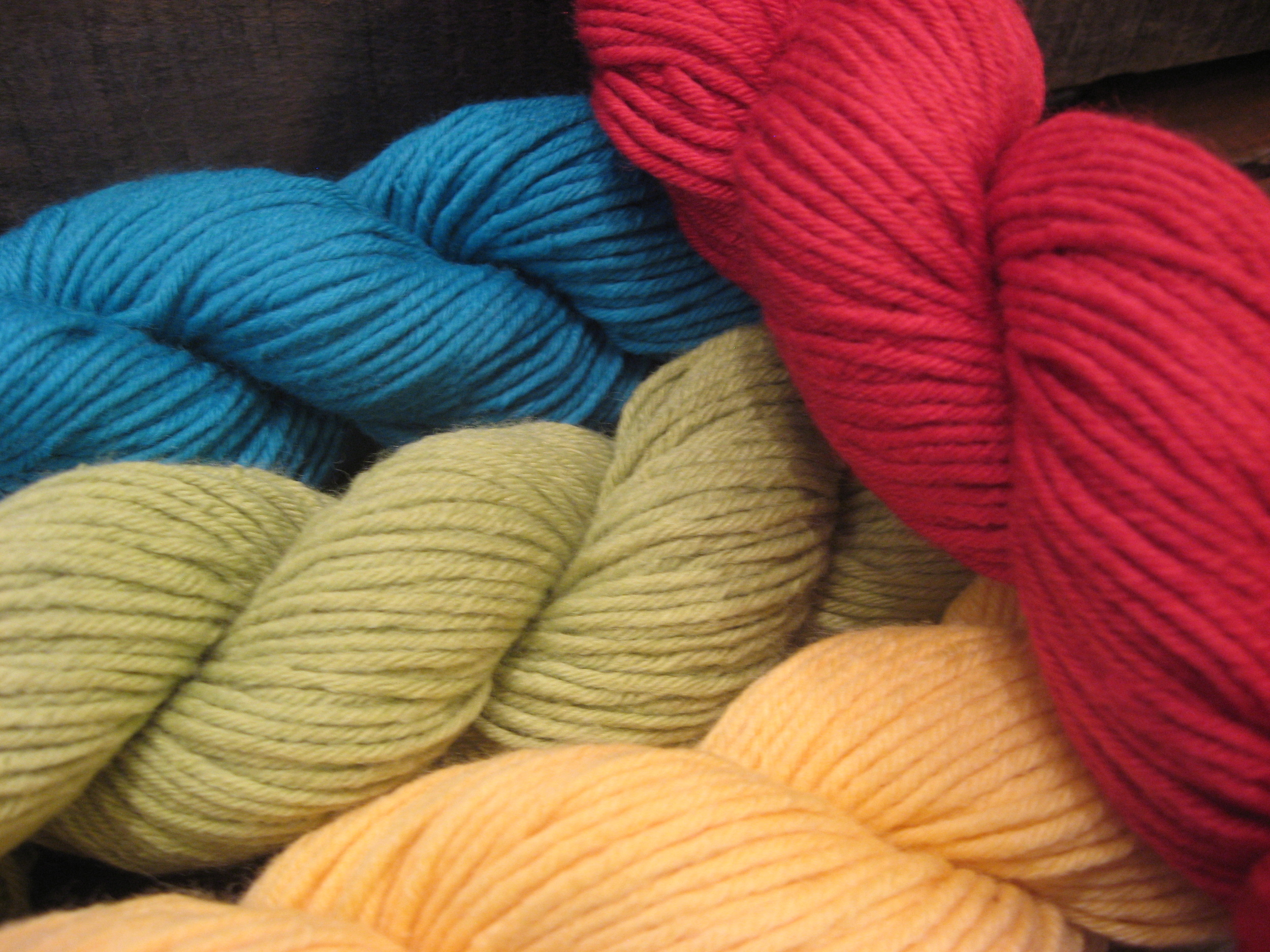Today started out like any other day: vacuum the shop, put out the "open" signs, straighten all the samples and dust the yarn bins. With that all done, and still not many people around, we decided to take down the "Christmas trees" window display and put up the "January" windows instead. This is always fun because it involves standing in the window and hauling things up and down the stairs.
Of course, about 60% of the way through this project, the UPS truck pulled up beside our back steps and delivered the biggest yarn box I've ever seen. Seriously: this thing was three feet tall and two feet deep (and wide!). Inside, as we knew, was some very exciting stuff...
We put the box by the counter and kept eyeing it as we finished reassembling the windows. That done, finally, we opened up the box and found some seriously great yarn:
This is about a third of the new sport weight that we got all excited about ordering last week. It's 100% wool, plied, and comes in a thousand million colors, of which we have 23. Excellent stitch definition and GREAT for fair isle & stranded knitting. Plus, they're 50g skeins, so you can get only as much as you need.
I haven't worked with this yarn yet, but Wendy is making a bright green hat that will be here as a sample as soon as it's done. (Or, you know, she'll leave it here and spend a week saying "Hey, Joey, why don't you work on it? You could work on it!") I picked it up the other day, though, and let me tell you: it's nice. It's SO BOUNCY... but that might just be because my current project (see below!) is silk and has ZERO bouncy.
We also got a bunch of the 128 superwash in some seriously good heathered colors, plus two of the multis (colorways 114 and 111). If you can get here before I hide them all for myself, you can have one too!
I have worked with this and it's so fluffy you might die.
That out of the way: it's rainbow time!
That's a Kettle Dyed rainbow, type A. You're looking at Lemon Curd, Tucquan Green, Sky Blue Sky, Grape Jelly, Candy!, and Zinnia.
Here's Kettle Dyed rainbow, type B:
And of course we have a Zauberball rainbow:
There are two different flavors of fingering-weight Zauberball: Zauberball and Zauberball Crazy. The former is a single ply and makes very attractive shawls/scarves, e.g. the rainbow baktus in the background of the above photo. I've also seen really good hats and gloves.
The latter is a double-ply yarn the colors of which are crazified, if you will. Each ply is the same colors, usually offset by about 15 inches. If you want Zauberball socks, this is the place to go. Because it's a two-ply, it's just a little bit thicker and will hold up better for the heel and foot of a pair of socks.
Here's my current favorite rainbow, though: Wendy's present! (It's late.)
It's a baktus, of course, with a few modifications: The shaping is every 6th row, my increases are [k1, kfb], and my decreases are [k1, ssk]. It's yarn I got in New Mexico plus a naturally dyed silk rainbow from Wendy's college days (1985? This yarn is older than I am!)
If you're interested: the purple is Brazilian logwood, the red is cochineal beetles, the orange is madder, the yellow is woad, the green is woad and indigo, and the blue is just indigo. If you're in on a Monday or Tuesday before I finish it, just ask and you too can fondle it. You want to, trust me.
I've never worked with silk before, but now that I've gotten used to it I like it a lot. It's very different from wool and even from cotton: we all know that wool is springy and forgiving: it doesn't care if you pull on it and if you drop a stitch you can shake your knitting all over and that stitch isn't going anywhere. Even cotton has a bit of give: not much, compared to wool, but a lot compared to silk. I've had stitches run all the way down to the next stripe of grey, and let me tell you that picking up stitches in garter stitch is a PAIN. My poor baktus has heard some words to which something of its tender age should never had been exposed... oops.
There you have it, folks: a rundown of the LYS rainbows as of the beginning of the new year. Life would be pretty boring if everything and everybody was the same -- so come on down sometime this winter and get your fill of color!
I promise I won't swear at your knitting.







































